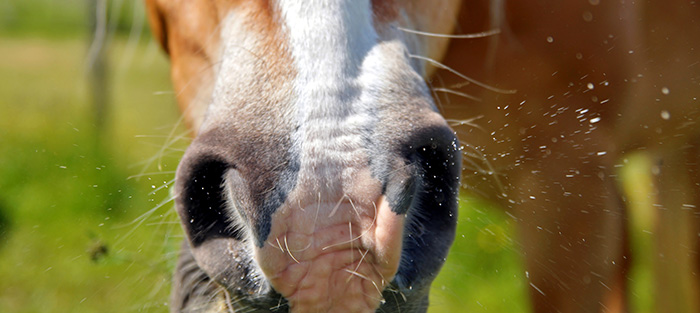
Many germs cause disease in livestock and poultry. Some can make people sick, too. Fortunately, if we look at how germs spread, we can find ways to manage disease risk through biosecurity.
There are five main ways that diseases spread.

Airborne spread occurs when an animal breathes in germs in the air

Direct contact spread happens when a susceptible animal touches an infected animal or person

Indirect contact spread happens when an animal touches objects or environments that are contaminated with germs

Ingestion (or oral spread) occurs when an animal eats feed or drinks water that is contaminated with germs
 a tick embedded in the skin of an animal" width="700" height="313" />
a tick embedded in the skin of an animal" width="700" height="313" />
Vector spread usually happens when an infected insect (like a tick or mosquito) bites a susceptible animal
Some infections can spread from animals to humans or humans to animals. These are called zoonotic diseases. Any animal or animal product, including meat, milk, eggs, and wool, can be involved in zoonotic spread. Young children, older adults, pregnant people, and people with a weakened immune system are more likely to get very sick if they contract a zoonotic disease.
Some common sources of germs are depicted below. Practice identifying disease risk by clicking on each of the exclamation marks: